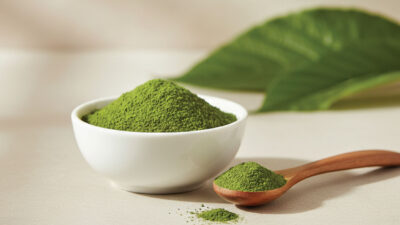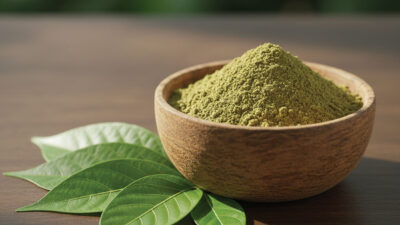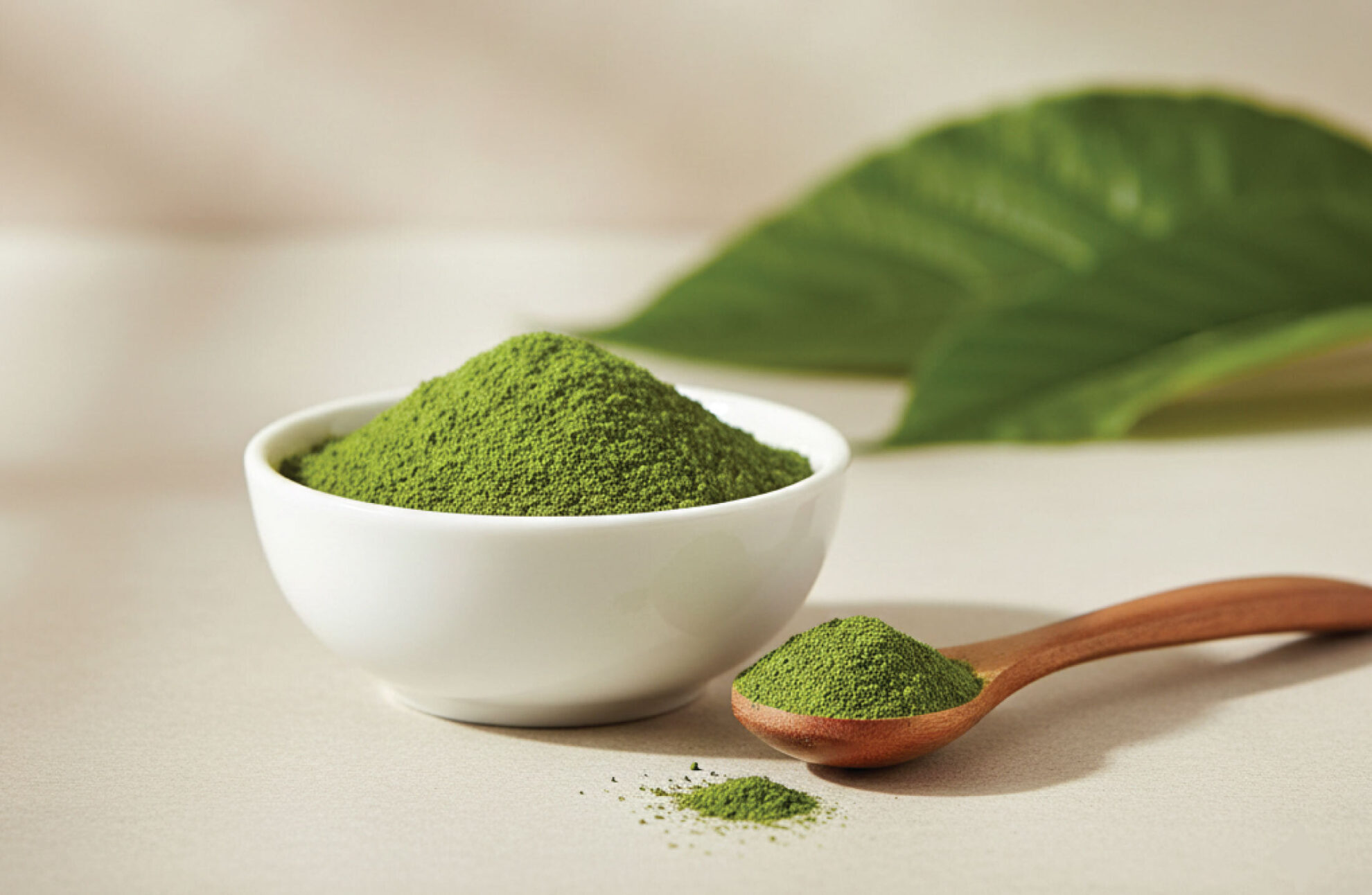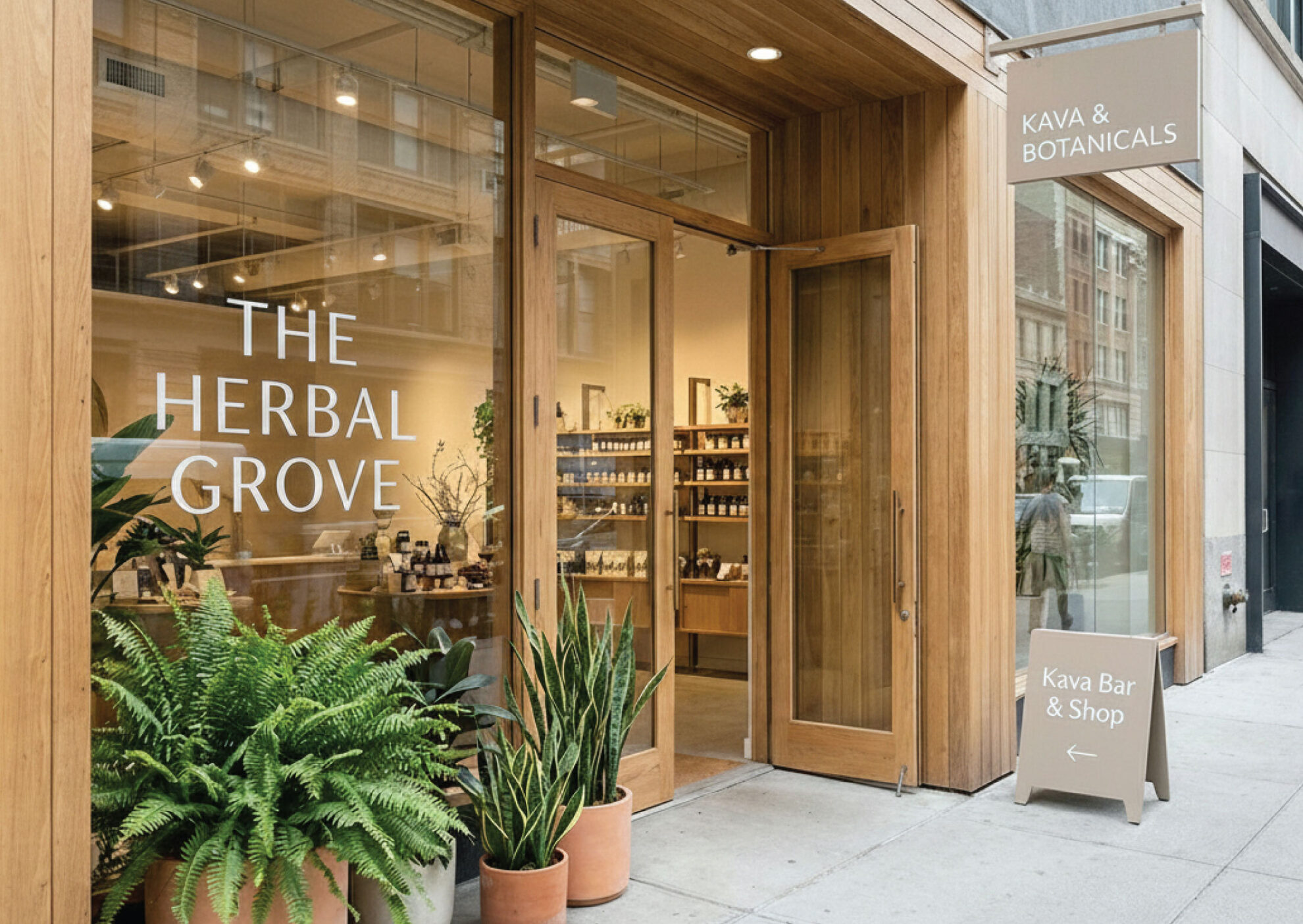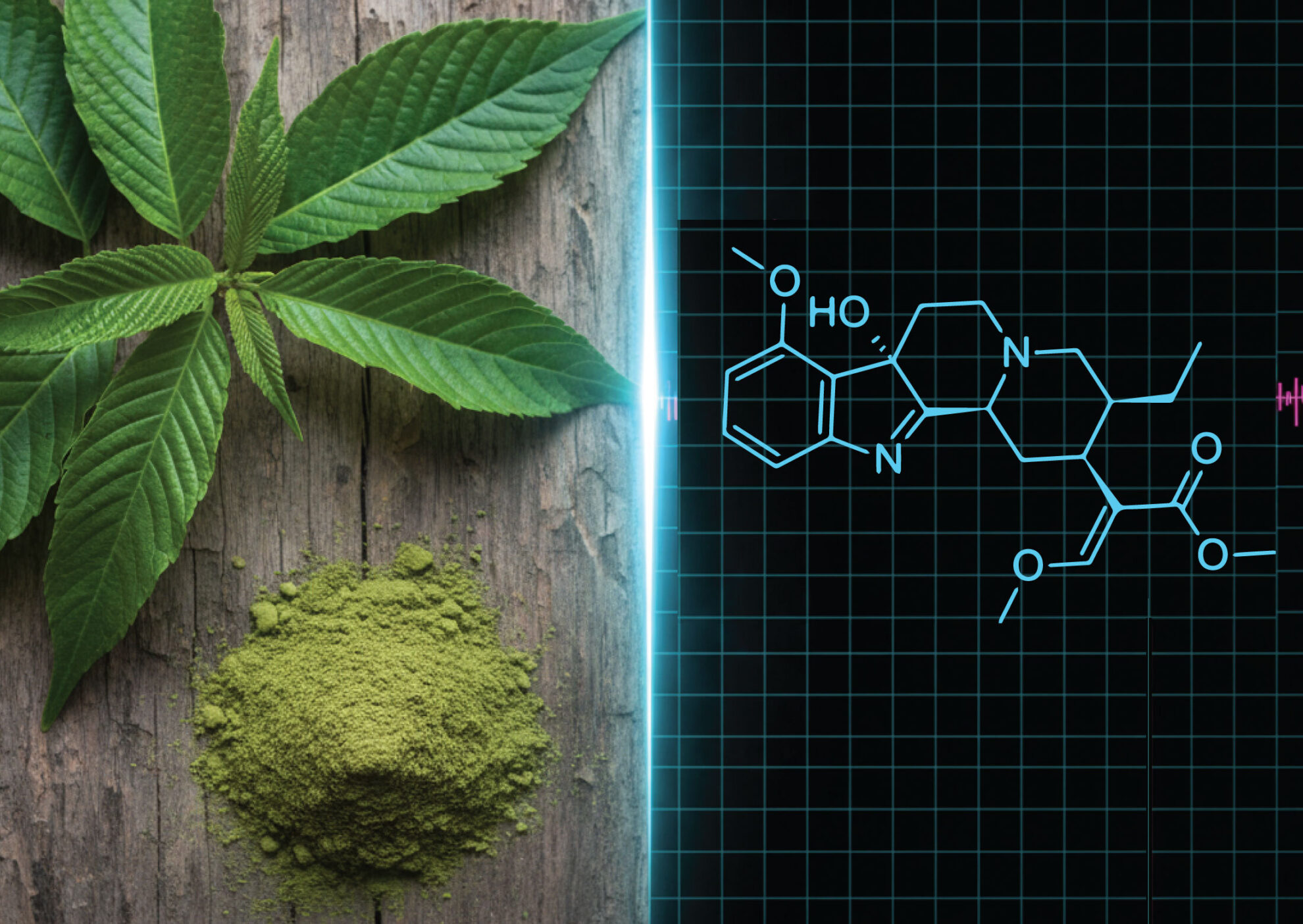Crushed leaf Kratom is made from the carefully harvested leaves of the Kratom tree. Once picked, the leaves are expertly dried using methods designed to maintain their natural alkaloid content. Instead of being finely milled like traditional Kratom powder, the dried leaves are coarsely ground, producing larger, more intact pieces that offer a distinct experience for Kratom users.
You might be curious about the possible benefits of crushed leaf Kratom. You may have heard about the Kratom plant and want to understand its different forms, including how crushed leaf differs from fine Kratom powder. This Kats Botanicals guide will help you learn more about crushed leaf Kratom, how to make Kratom teas with it, and some powder alternatives if you can’t buy crushed Leaf Kratom form.
What Exactly Is Crushed Leaf Kratom?
Kratom comes from the Mitragyna speciosa tree, a tropical evergreen native to Southeast Asia, thriving in countries like Thailand, Indonesia, Malaysia, and Papua New Guinea. For centuries, indigenous populations in these regions have used its leaves for various traditional purposes. They recognized the properties of the Kratom leaf long before it gained attention elsewhere.
Crushed leaf Kratom is harvested from the leaves of the Kratom tree. These leaves are hand-picked, then carefully dried, often using specific techniques to preserve their alkaloid profile. After drying, they are coarsely ground, resulting in small, discernible pieces of leaf rather than a fine powder.
This form, resembling loose leaf tea, is closer to how people traditionally consumed Kratom. They would often chew fresh leaves directly from the tree or brew simple teas using dried or fresh leaves. Using crushed leaves for Kratom tea is a nod to these historical practices.
Crushed Leaf vs. Powder Kratom: What’s the Real Difference?
Many people wonder about crushed leaf Kratom versus Kratom powder. While they share a common origin, their physical form, preparation methods, and the user’s experience with them can differ significantly. Understanding these differences can help you choose the Kratom product that best suits your preferences, whether it’s loose leaf Kratom or a finely milled Kratom powder.
Texture and Form
Crushed leaf Kratom visually resembles loose tea leaves. People who prefer the crushed leaf form generally use it for making Kratom tea. This form is less processed than its powdered counterpart.
Kratom powder, in contrast, is extremely fine, often compared to the consistency of flour or powdered sugar. This is achieved through additional milling processes after the leaves are dried. This is a popular way many people buy Kratom because it can be mixed into water, juice, or smoothies, taken directly in measured amounts by using Kratom capsules, or made into tea.
Crushed Leaf vs Powder: Potency and Absorption
Some users report that the effects from leaf kratom tea come on more gradually and may feel smoother. This could be attributed to the slower extraction of active compounds (alkaloids) during the brewing process. When you drink strained Kratom tea, you are consuming an infusion rather than the solid plant material.
When Kratom powder is ingested directly, you consume the entire leaf material, including all its plant fibers and compounds. The significantly larger surface area of finely ground powder may lead to increased bioavailability and quicker absorption of alkaloids by the body. The overall alkaloid profile of the chosen Kratom strain will heavily influence the experience.
It is important to remember that potency depends on numerous factors, including the specific Kratom strain (like Maeng Da Kratom vs Bali Kratom, or Thai Kratom). Other factors that shape your Kratom experience include:
- Quality and freshness of the Kratom leaf
- Harvesting and drying processes
- Individual body chemistry
- Metabolism (and whether Kratom is consumed with a potentiator)
- Tolerance or sensitivity to Kratom alkaloids
Let’s take a look at crushed leaf Kratom compared to Kratom powder:
| Feature | Crushed Leaf Kratom | Kratom Powder |
|---|---|---|
| Texture | Coarse, leafy bits, like loose leaf, dried tea leaves. Strained from tea to produce a smooth, mostly sediment-free tea | Fine, flour-like. Not typically strained, therefore produces a stronger tea (often with sediment) |
| Primary Use | Brewing tea (strained) | Direct mixing, ‘toss and wash’, capsule, or teas |
| Ingestion | Liquid infusion | Whole leaf material consumed |
| User Perception of Onset | Often reported as more gradual and smooth | Often reported as quicker to prepare and faster-absorbing |
User Experience and Preference
The choice between crushed leaf and powder often boils down to personal preference and lifestyle. Some individuals cherish the ritual of preparing and sipping Kratom tea, finding it a more traditional and mindful experience.
Others value the convenience and speed offered by Kratom powder. Powder can be easier to measure with high precision Kratom doses and consume quickly, which may suit those with busy schedules. Some powder products are even available in pre-measured servings.
For those new to Kratom, trying both forms might be beneficial to determine which aligns better with their preferences. Different Kratom strains will also offer varied experiences, regardless of the product form. For example, making teas with White Kratom powder may work well as a coffee substitute for jitter-free, smoother energy to start your day.
⭐⭐⭐⭐⭐
“Love this blend. [White Maeng Da] Perks me up every time I use it.” – Joanne R.
Exploring the Potential Benefits of Kratom
People turn to Kratom for a variety of reasons, seeking different outcomes. Crushed leaf Kratom offers one specific way to experience the plant’s reported properties. The method of preparation as a tea might influence the subjective experience compared to ingesting raw powder.
For one, when you consume Kratom powder instead of making tea with loose Kratom leaf, you know that you’ll consume 100% of the alkaloids in the brew. With loose-leaf teas, some alkaloids may not be fully infused into the liquid, producing a weaker (although grit-free) tea.
Potential Benefits of Kratom Tea
User reports commonly mention feelings of mild stimulation and enhanced focus with certain strains, particularly White Vein varieties like White JongKong and White Maeng Da. Conversely, other strains, especially Red Vein Kratom, are often associated with relaxation and a sense of calm. Green Vein Kratom is frequently described as providing balanced Kratom effects, without being too stimulating.
How to Use Crushed Leaf Kratom Effectively
To get the most from your crushed leaf Kratom, knowing how to prepare it properly is essential. Brewing tea is the primary and most traditional method for this form. Let’s explore the nuances of crafting exceptional Kratom teas.
The Art of Making Crushed Leaf Kratom Tea
Making Kratom tea from crushed leaves is a straightforward process, though personal preferences can lead to variations. Here’s a fundamental Kratom tea recipe to get you started:
- Measuring Kratom Dose: Measure your desired amount of crushed leaf Kratom. Many beginners start with one to two teaspoons (approximately 2-5 grams), but the appropriate amount can vary widely based on individual sensitivity and the specific Kratom strain.
- Proper Water Temperature: Heat fresh, filtered water until it reaches a simmer, ideally around 185-205°F (85-96°C). Avoid using rapidly boiling water, as some believe excessively high temperatures might degrade certain alkaloids.
- Mixing: Add the crushed leaf Kratom to the hot water. You can do this directly in a pot, a French press, or using a tea infuser or reusable tea bag.
- Steeping: Let the leaves steep for 10 to 20 minutes. Some users prefer a longer steeping time, up to 30 minutes, for a potentially stronger brew. Gentle stirring during steeping can help with extraction.
- Straining: Carefully strain the crushed leaves from the tea. A fine mesh strainer, cheesecloth, or the built-in filter of a French press works well for this. The goal is to remove as much of the plant material as possible.
- Flavoring: To improve the bitter taste of Kratom teas, you can enhance your brew with flavorings. A squeeze of lemon or lime juice is a popular addition, as citrus juices are thought by some to boost alkaloid absorption. Honey, agave nectar, ginger, cinnamon, or other herbal teas like chamomile can also be added to taste.
You can experiment with steeping times, water temperature, and additions to find what works best for you. Some users even perform a second steep with the same leaves to extract any remaining compounds. The journey to the perfect cup of Kratom tea is part of the experience with loose leaf Kratom.
Finding Your Sweet Spot: Potency Considerations
With any form of Kratom, whether crushed leaf or powder, it is wise to start with a small amount, especially if you are new to it or trying a new strain. This allows you to assess your body’s response before considering a larger quantity. You can always gradually increase if needed, but it’s harder to go back if you’ve taken too much.
Several personal factors can influence how you experience Kratom. Your body weight, individual metabolism, whether you have recently eaten, and your overall sensitivity to plant-based alkaloids can all play a role in determining your response. Consequently, what works for one person might not be ideal for another.
Remember to try different Kratom strains to make your teas. The different strains and color venations influence your experience due to their varied alkaloid profiles. This means a Red Vein crushed leaf tea, perhaps made from Red Horn or Red Thai Kratom, might feel significantly different than a tea brewed from a Green Maeng Da variety. Tracking your experiences with different Kratom strains, amounts, and steeping times can be helpful.
Learn about the right Kratom dosage for making your teas.
Recent Changes to Indonesia Loose Leaf Kratom Exports
If you’ve noticed fewer crushed leaf Kratom options on the market lately, it’s because late in 2024, Indonesia changed its export laws regarding unprocessed Kratom, specifically whole leaf Kratom and loose leaf Kratom. These new rules require Kratom to be more processed before shipping, meaning that only Kratom in powder form will be exported, and under strict quality standards.
These regulations are already impacting supply chains and product availability in the U.S. Vendors may face delays, higher import costs, and a decrease in overall crushed leaf Kratom products.
Fans of loose-leaf Kratom teas may want to switch to creating Kratom teas using Kratom powders. For similar strength and smoothness as those teas created with loose leaf Kratom, try the following Kratom powder strains:
Red Kratom Tea to Promote Relaxation & Relief Support
- Wild Red Bali – A good evening strain.
- Red Vein Maeng Da – A daytime Red.
- Chocolate Kratom or Red Bentuangie – Decadent, smooth options.
Kratom Tea for Energy & Motivation Support
- White Elephant – For newbies and moderate Kratom users.
- White Maeng Da – For advanced users.
- Cluster AF! – A blast of Whites and Greens.
Kratom Tea for Balance & Clarity
- Plantation Maeng Da – Balanced blend of Green and White.
- Green Maeng Da – Balanced strain for seasoned users.
- Super Green – A good starter-strain for making Green Kratom teas.
Final Thoughts: Crushed Leaf Kratom for Tea Lovers
Crushed leaf Kratom is perfect for a traditional way to experience this fascinating plant from Southeast Asia. It provides a distinct alternative, particularly for individuals who enjoy the ritual of brewing and sipping herbal teas. Understanding its preparation and the nuances between Kratom strains can empower you to make informed choices as you decide what is right for you. However, due to exportation issues, it may become harder to find whole-leaf or loose-leaf Kratom online.
Whether you choose a White Vein Kratom for morning, a balanced Super Green Kratom for afternoon, or a soothing Wild Red Bali for evening, powdered Kratom offers much diversity for your Kratom routine. Remember to start slowly with any new Kratom product, listen to your body’s response, and buy Kratom powder from Kats Botanicals, the preferred supplier of high-quality, lab-tested Kratom powders.


